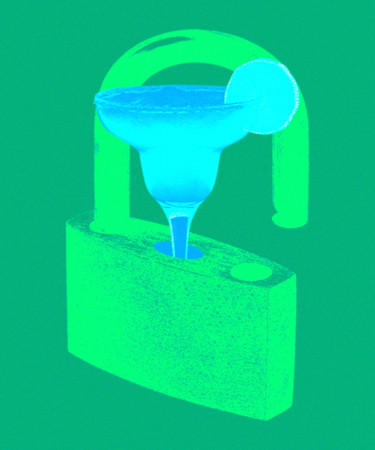If you were to argue that the Margarita was the most popular cocktail around, you’d probably be right. Throughout its many evolutions, the Marg remains a summer staple and go-to drink for even the pickiest of drinkers. When made correctly, its refreshing mix of tangy sweetness and sour citrus can instantly leave you salivating for more after each sip. However, be it the boom of tequila or simply an over-saturation due to the cocktail’s cult following, the formula for a good Margarita is often misunderstood.
To break the cycle of mediocre Margaritas, we spoke to esteemed bartender and co-owner of Brooklyn-based FIASCO! Wine and Spirits, Ivy Mix. Well versed in Latin American culture and spirits, Mix holds a special place in her heart for the beloved cocktail and shares her secrets for making a delicious, well-balanced Margarita.
“Without a doubt, the key to a good Margarita is the caliber of the ingredients,” Mix says. “First and foremost, this means that the tequila used to make the drink should be 100 percent Blue Weber agave.”
For a classic version, Mix recommends using a blanco tequila. “Traditionally, the drink is supposed to be crisp, bright, and made with fresh citrus, and the tequila should complement that taste profile.” In her opinion, aged reposados and añejos, though great for sipping, can weigh down the cocktail with notes like oak and vanilla from time spent in barrel.
Just as important as the style of tequila is the use of a high-quality orange liqueur. Part of the Daisy category of cocktails, the Margarita calls for triple sec such as Cointreau for sweetness and balance. Though some may opt for agave nectar instead, the addition of the liqueur is what makes a true Margarita. “If you choose to swap in agave you’re having a Tommy’s Margarita, a variation created at the famed Tommy’s Mexican Restaurant in San Francisco instead,” Mix says.
Similarly, she feels there’s no substitute for freshly squeezed lime juice and recommends utilizing a basic elbow juicer to get the most from the fruit. “Bottled juices tend to have an oxidative and overly acidic taste that can overwhelm the other ingredients,” she says. Since lime is essential to the drink’s flavor, its freshness can make all the difference, so it shouldn’t be an afterthought when building the cocktail.
Last but not least, the cherry on top of a good Marg is the piquant flavor of a salted rim — but be sure not to go overboard. Kitschy gadgets and endless pop culture references have conditioned us to believe that Margarita glasses should be dipped in lime juice before being twisted in salt in order to provide a fully salted rim. Mix, however, knows better. “In most cases, twisting the glass in salt causes salt to also fall into the glass, making the drink extra salty.” Instead, she suggests rubbing the outside of the glass with a cut lime and then rolling it onto the salt, ensuring that salt only gets on the outside of the glass. “Salt heightens flavors and makes everything taste good, but too much of it can overpower the drink,” she says. “Personally, I’m a fan of the half-rim because it provides just enough to accentuate and balance the cocktail.” With these tips in mind, a good Margarita has never been easier to make at home.
